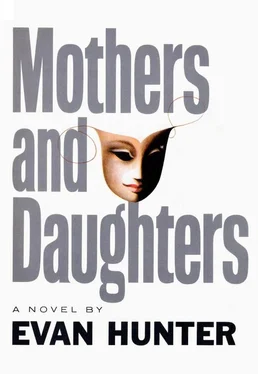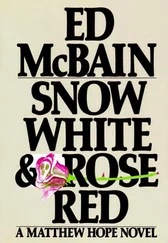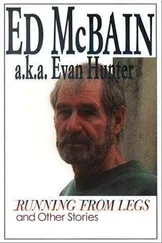The first thing they did was lower the hem line. They pretended this was the latest news from the Paris couturiers , a hem line that suddenly dropped from a cozy spot an inch above a dimpled knee to someplace low on the shinbone. The women all took out their tape measures, and measured up twelve inches from the floor, and then made the startling discovery that even letting out the hems of their favorite frocks would never make them long enough for the new fashion. The longer dresses and skirts appeared sporadically — this was, after all, a nation in mourning, and mourners don’t go on spending sprees even though all the magazines were shouting about a war-free Christmas the moment the Japanese surrendered. The girls who first sported the longer lengths were mocked by their sisters, but mourning is contagious and someone had to bear the guilt of that wartime spree. So it started with the women, and the first thing they did was cover up those legs, cover up legs that were famous the world over because they were good strong straight legs, rickets-free, fed on good American sunshine and canned Vitamin C. They covered them up in what they called the New Look, a look that was as old as the Crusades, but a look that ushered in a new sense of morality, a stiffening of the sagging upper lip. The sneer that had first accompanied the new fashion turned into a fixed expression of approval. It was popular to mourn, and if the men of America missed seeing shapely calves and well-turned knees, they told themselves the new style was more provocative, a style that hid more than it showed, a style that encouraged speculation.
The new cars came out, the first since 1942, and color was the thing. It was odd that a nation in mourning should suddenly burst onto the automotive scene with the rainbow hues that issued forth from Detroit, but Puritanism is a crazy thing at best, and even in 1692 there was a certain exotic quality to the witches they hanged, a certain theatricality to the serious long-panned men who ranted about God and the devil, and who listened to the Salem maidens as they raved in Freudian free-association about the things the black enticer had asked them to do. Black should have been the color for this guilty people, this nation suddenly blushing, as was every nation in the world, for its wartime extravagances of emotion and rage. But even guilt must have its compensations, and so the automobiles blossomed in radiant splendor, tentatively at first, design still several years behind color boldness. People began buying the product, telling themselves they were entitled to a new car after all those years of deprivation. The war was over, after all, and if they bought a beautifully colored symbol of their own masculinity, it could help them to forget those foolish years. Oddly, everyone in America had already forgotten the very real and noble part they’d played in crushing a monster.
The skirts were longer, and the cars were flashier, and people came back to work as if they were returning from a long weekend that just happened to be World War II. The weekend had been a lot of fun, but now there was work to be done. There had been drinking and fooling around, and a little honest killing here and there, but now there was work to be done, now there was a desk to get in order, and the guilt was heavy. The Hollywood machine began grinding out a few sticky-sweet films on readjustment, the best of which was The Best Years of Our Lives , and a little Broadway revue named Call Me Mister was a smash hit, combining as it did memories of the military with the bewilderment of return to prewar values. The trouble was, however, nobody could remember what the prewar values were. The young people who’d gone off to fight the war couldn’t remember the thirties except as a time of NRA stickers and poverty, and all this had radically changed the moment the Japanese dropped their cargo of bombs and torpedoes on the sleeping fleet in Pearl Harbor. There was more than a simple diffusion of memory involved in readjustment. There was, in fact, no memory at all. The people who came back, and the people who were there to welcome them, suddenly discovered they were starting with a blank sheet. They had been children before the war, innocent and naïve, thrilling to the high whining voice of Henry Aldrich yelling for his mother, but now they were adults, beset with all the problems of adults, all the fears, all the guilts, all the obsessions. It was no wonder that the club was formed, and that it gained such immediate acceptance.
The club was not the Pyramid Club, although this too flourished for a few brief months, a vicarious sort of gambling thrill that replaced the real thrill of weekday dates with servicemen on leave, the real soaring pleasure of reading about the assault on Tarawa, the whole overstaged, overdramatic, overpoetic production that had been a world at war. The club was a better club, the common mortar of which was guilt: the age of the analyst had arrived. It became fashionable quite suddenly to discuss things like ego and id, repressed hostility, Oedipus, Electra, and Orestes. The Snake Pit was an instant smash, and audiences all over America cheered Olivia de Haviland as she writhed in the torments of insanity, feeling God knew what relief at her discomfort — better you than me, Olivia — and finally gave her the New York Film Critics’ Award. The top motion-picture awards that year, however, were divided among three pictures that were expressive of this new wave of subtler penetration, this psychological exploration of the self: the first, a brilliantly evocative film interpretation of Hamlet; the second, a story that probed the emotions of a deaf mute; and the third, a rare study of men searching for gold in the Sierra Madre Mountains. Yes, the clocks had all stopped at fifty minutes before the hour, and a couch was no longer a piece of living-room furniture. The skirts were longer, and the cars were brighter, and all the people were deeper, God, how much deeper they all were! They probed constantly, wanting to know more about themselves and each other, digging, continually asking questions in search of a new identity to fit into this unremembered landscape. In New York City, some restless kids formed a street gang.
And then, because people were able to talk about their guilt instead of really feeling it, the reins began to loosen a little bit. It would be a long time before women began to show those good legs again, but the skirt was already inching imperceptibly higher on the calf. A play by Tennessee Williams involving some fairly macabre types was greeted with enthusiastic acclaim, and a new actor named Marlon Brando electrified New York with his portrait of an animal. Russia began talking about exploding her own nuclear devices, and the pointing finger of the world began to turn in another direction. The readjustment kick was on the way out. The guilt, ingrained as deep as the soul, a guilt that would linger and grow, was temporarily put aside as the war was recalled once again, not with patriotic fervor now, not with the screaming heroics of Bataan with Robert Taylor sitting behind his lonely machine gun as the camouflaged Japanese crept through the mist, fade-out, the end, nor with the wild capers of Errol Flynn cavorting behind German lines in the company of downed Allied flyers, not with any of that boiling-point celluloid magic designed to send the young to the recruiting office and the old to the local bank for a war bond, not with any of that, but with a serene contemplation, an attitude of “You know, we weren’t really so wild in those war days; those war days brought out in us the things that were finest.” In a Broadway roster that included such bits of froth as High Button Shoes and Make Mine Manhattan and Look, Ma, I’m Dancin’ , there were two solid hits called Mister Roberts and Command Decision , both of which — in the new tradition of psychological depth and meaningful action — portrayed the inner machinery of men at war, rather than the external trappings like Stuka bombers and night patrols. In Hollywood, a giant movie called All the King’s Men was being made ready for release. It would explain demagoguery to Americans everywhere. In New York, the Giants followed the lead of the Brooklyn Dodgers and signed a Negro ballplayer named Monte Irvin.
Читать дальше












